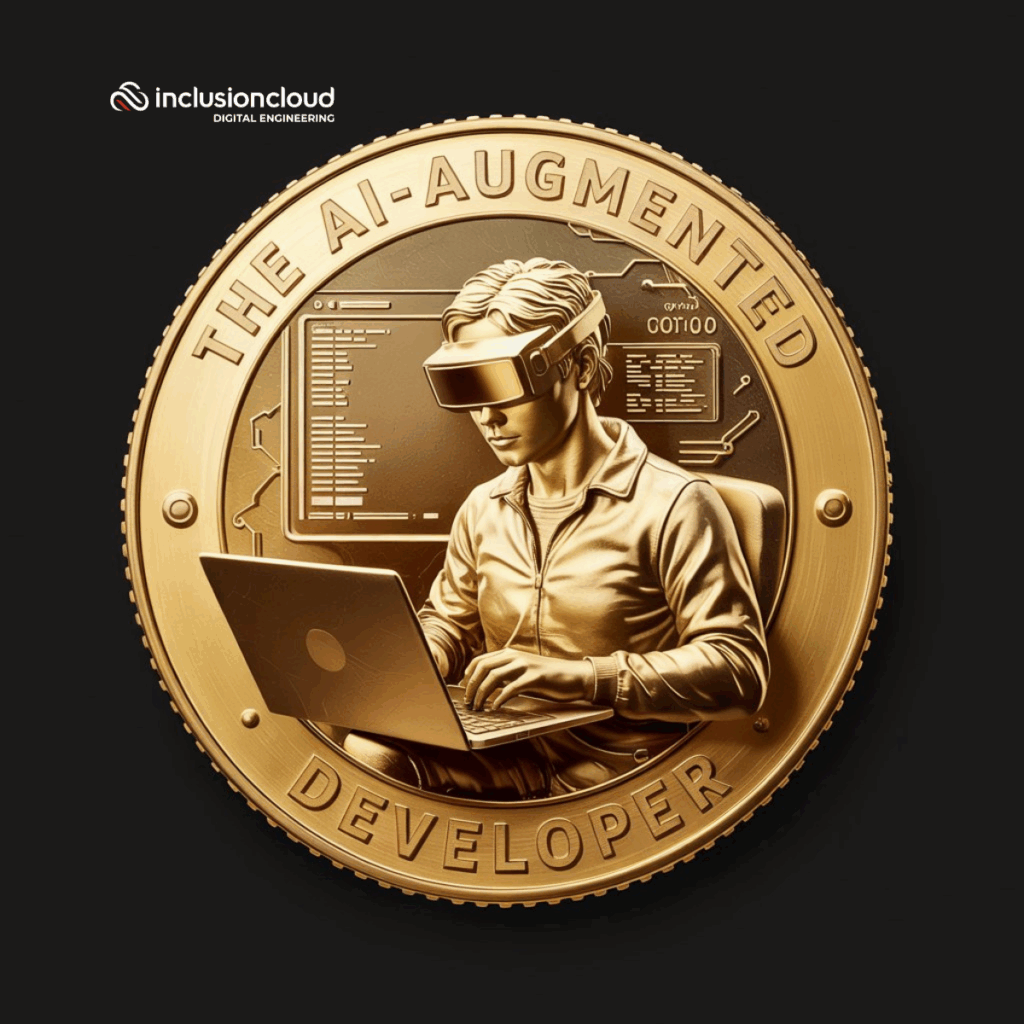The financial services industry has long held a digital edge. Almost every interaction—from loan approvals to customer onboarding—is documented, structured, and rich in data. This unique position has made banking and financial services fertile ground for the next wave of automation, powered by AI, small and large language models (SLMs and LLMs), and intelligent agents.
In 2023 alone, financial services firms invested $35 billion in AI, and that figure is projected to rise to $97 billion by 2027. Why? Because AI is no longer just an efficiency tool. It’s becoming central to growth, customer experience, and even fraud prevention.
Here are four approaches redefining the sector in 2025:
1. The New Automation Stack: SLMs, LLMs & AI Agents
The banks leading the way in 2025 aren’t just using AI—they’re building automation stacks that combine three key technologies: Small Language Models (SLMs), Large Language Models (LLMs), and AI Agents. Each plays a unique role across departments, and each comes with its own balance of cost, complexity, and opportunity.
- SLMs are fast, lightweight tools trained on specific domains—perfect for repetitive but essential tasks. Compliance teams use them to assist with KYC reviews, operations teams rely on them to guide internal processes, and customer service platforms use them to answer common queries. Their strength is speed and low cost. But they lack flexibility: they don’t adapt well outside their training domain, and updates require constant tuning.
- LLMs bring broader language understanding and reasoning. They’re being adopted in advisory teams to summarize earnings calls, draft investment insights, or support relationship managers with contextual suggestions. Their power lies in their ability to synthesize data across formats and contexts. The tradeoff? High compute costs, slower performance, and greater governance requirements to avoid inaccuracies or hallucinations.
- AI Agents act as digital coworkers. They don’t just interpret, they decide and act. For example, in retail banking, agents can process loan applications end-to-end, including document verification and eligibility scoring. In risk departments, they can flag anomalies and trigger investigations. They’re fast, autonomous, and capable of executing full workflows. But they demand more upfront integration effort and raise new types of operational risks, especially if their actions aren’t clearly bounded.
Here’s how they compare:
| Technology | Best For | Cost | Speed | Where It Fits Best | Main Risk |
|---|---|---|---|---|---|
| SLM | Task-specific, rules-based automation | Low | High | Compliance, support, internal ops | Limited scope |
| LLM | Contextual understanding, summarization | Moderate–High | Moderate | Advisory, research, client-facing teams | Output quality and oversight |
| AI Agent | Workflow execution, autonomous tasks | Variable | Very High | Back-office ops, credit, fraud | Governance and control |
This table offers a strategic way to map each technology to business needs.
Cost refers not only to implementation but to the ongoing infrastructure, licensing, and governance burden. Speed captures how quickly the tool can process inputs and return reliable outputs—critical for time-sensitive areas like fraud detection or loan origination.
SLMs are cost-effective and fast, ideal for internal teams managing repetitive workflows. A KYC analyst, for example, could use an SLM to check onboarding documents in real time, accelerating the review process while minimizing the chance of missing a formatting error. But SLMs won’t scale well for unstructured or multi-domain tasks.
LLMs, though more expensive, bring deeper reasoning. A relationship manager working with high-net-worth clients could rely on an LLM to generate personalized investment summaries based on market data and client history. However, these models require close monitoring, one poorly supervised output could lead to reputational or compliance risks.
AI Agents shine when there’s a full process to be automated—like reviewing a loan, checking risk scores, pulling data from various systems, and finalizing a decision. They’re a productivity multiplier. But without clear rules and guardrails, they could act beyond their intended authority—approving a high-risk loan or triggering false fraud alerts.
Each plays a role in a layered, intelligent architecture that balances precision, scale, and control.
According to McKinsey, generative AI could drive $200B to $340B in annual value for the banking industry. But the organizations that will unlock that value are those that apply the right type of automation to the right task—based not on hype, but on operational fit.
But let’s be clear, adopting AI alone isn’t enough: what sets leaders apart is how well they orchestrate and align each technology to specific needs, balancing innovation with practical execution.
2. Combating Deep Fake Phishing, Misinformation, and New Cyberthreats
Your CEO might not be your CEO.
That was the reality in a recent case involving Ferrari, where cybercriminals used AI to clone the CEO’s voice and sent a WhatsApp message impersonating him. It was a real attempt at financial fraud that nearly resulted in significant losses.
These aren’t fringe cases anymore. Deepfake phishing attacks increased 3000% in 2023, and the rise of generative AI is making them more convincing, more accessible, and more dangerous.
Of course, in the financial services industry, where a single forged communication can trigger massive transactions or leak sensitive information, the risk is growing exponentially.
Voice-verified approvals. Executive-level instructions. Client-facing videos. Any of these can be forged with high accuracy using tools powered by GANs (Generative Adversarial Networks), facial mapping, and voice cloning. Recent reports expect 90% of online content to be synthetically generated by 2026. That’s the landscape leaders now face.

The impact is multi-dimensional:
- Brand risk: A fake video of your CEO could go viral before the truth is uncovered.
- Financial fraud: Synthetic audio from a CFO or treasury lead could authorize a wire transfer that disappears within minutes.
- Data leaks: A convincing internal request could trick an employee into handing over confidential documents.
- Legal exposure: Faked endorsements or statements can trigger regulatory penalties.
- Loss of trust: When employees or clients can’t tell what’s real, it undermines the very fabric of business.
That’s why leading institutions are pairing AI detection tools with a renewed focus on human awareness. In an interview on the topic, Inclusion Cloud’s Chief Revenue Officer Nicolás Baca-Storni emphasized: “The escalation of deepfake capabilities necessitates immediate and strategic action. Comprehensive employee training, combined with modern detection tools, is no longer optional.”
Forward-thinking cybersecurity strategies now include:
- Biometric analysis of voice and facial data
- Behavioral baselining of user interactions
- Multi-layer identity verification workflows
- Deepfake content scanning software
- Crisis playbooks and internal escalation protocols
The companies ahead of the curve understand that prevention technology is becoming increasingly essential. But they are also preparing their people, auditing communication workflows, and designing systems that avoid single points of failure.
The next phishing attack might look and sound exactly like someone you trust.
3. Put the Creativity to Find New Revenue Opportunities
Banks hold more data than most industries. The challenge has always been how to turn that data into action. AI is now making that easier—not just for data scientists, but for every department.
Information that once lived in silos can now flow across departments and be orchestrated in real time. Point-of-sale systems are becoming smart touchpoints, capturing behavioral signals, verifying identity, and activating tailored offers—all from one transaction. This transformation enables institutions to move beyond passive data collection and into proactive revenue generation.
Security and personalization are converging. A single PoS interaction might flag fraud, update a customer profile, and suggest a cross-sell opportunity. These systems are evolving into strategic assets for both defense and growth.
At the same time, banks are unlocking value from unstructured data sources. AI tools now analyze audio logs, PDFs, call recordings, and written notes to extract insights. This information enhances customer profiles, powers predictive models, and drives smarter product recommendations.
The rise of AI-augmented development is also expanding what business teams can build. Internal apps, calculators, dashboards—what once took weeks of engineering time now takes hours. Product managers and other non-technical teams are using AI tools to prototype apps, mock up digital services, and test new ideas without waiting on engineering backlogs.

This democratization of development is part of a broader shift known as vibe coding—where speed and experimentation take the lead. While it opens creative possibilities, it also introduces real risks. Code generated without proper architecture can result in systems that are hard to maintain, vulnerable to attacks, or non-compliant with data regulations.
That is why AI-augmented developers are becoming essential. They combine the speed of AI with the discipline of engineering. Their work is informed by security practices, technical frameworks, and long-term scalability. Creativity needs guardrails to become a business advantage.
Each of these advancements creates openings for new products, services, or efficiencies that drive profit. A smarter recommendation engine increases wallet share. Faster loan processing brings in more volume. Better insights reduce churn.
But speed introduces risk. Unchecked development and disconnected workflows can lead to fragile systems. That is why senior talent remains essential. Architects ensure systems scale. Engineers integrate and safeguard data. Security leads monitor for exposure.
In short, creative potential becomes a business asset only when backed by sound strategy and strong execution.
4. The Talent in the Shadows
None of this happens without the right people.
While automation captures the spotlight, it’s the talent behind the scenes—those designing architectures, debugging edge cases, managing data pipelines—that makes the magic possible.
According to the World Economic Forum, 90% of digital leaders believe their organization must make significant adjustments—or a total transformation—to their reskilling strategy in order to support the future.
That means going beyond traditional recruitment. It’s about finding:
- Certified developers who understand financial compliance
- Machine learning specialists who fine-tune performance
- Data engineers who keep everything flowing
- Tech leads who align rapid delivery with enterprise stability
The competition for this talent is fierce. That’s why more companies are combining nearshore and offshore models—balancing the speed and collaboration of local teams with the scalability and cost-efficiency of global delivery.
Financial Services: Build the Future Without Breaking What Works
The financial institutions gaining ground in 2025 are not just using new technologies. They are confronting complexity with intention. They are selecting the right tools for each challenge, designing for security from the start, and surrounding their systems with talent who know how to deliver under pressure.
In an environment where flawed code or misfired decisions can cost millions, execution quality is non-negotiable. AI can generate software, but not the kind you want operating mission-critical systems. Sensitive data, strict regulations, and customer expectations demand more than speed—they require experience.
That is where we come in.
If you are exploring how to integrate AI across your institution without compromising trust, performance, or compliance, contact us. We specialize in turning ideas into robust, secure solutions backed by certified experts.
Book a discovery call and let’s start mapping your next move.





